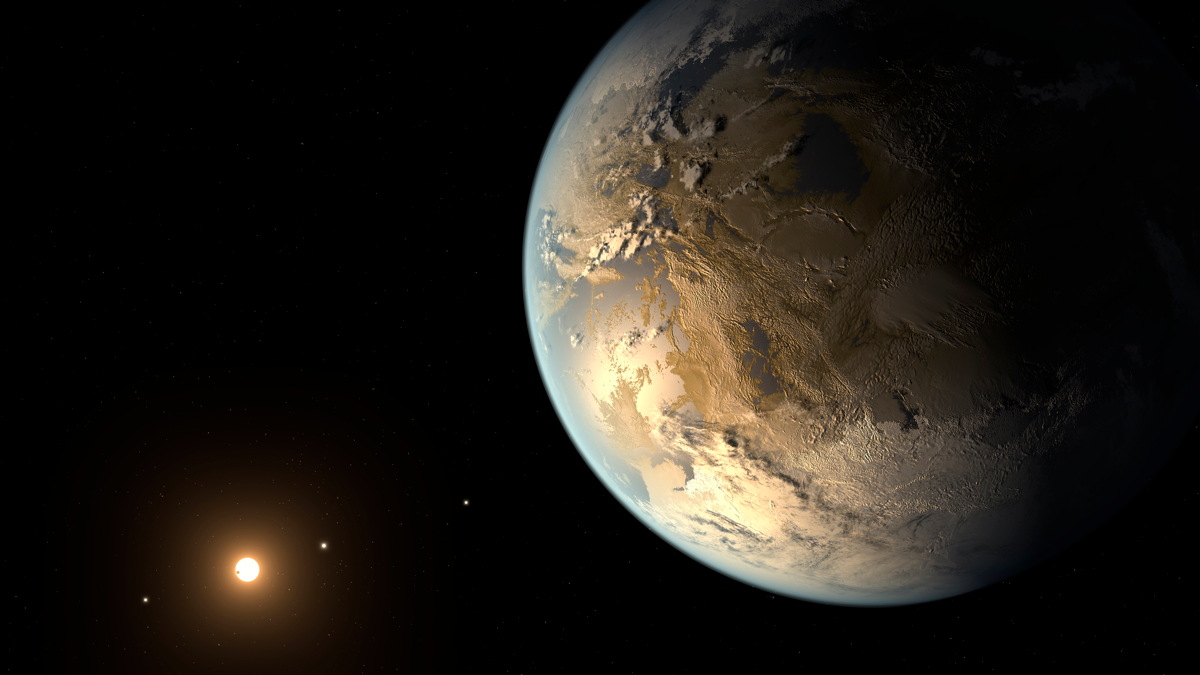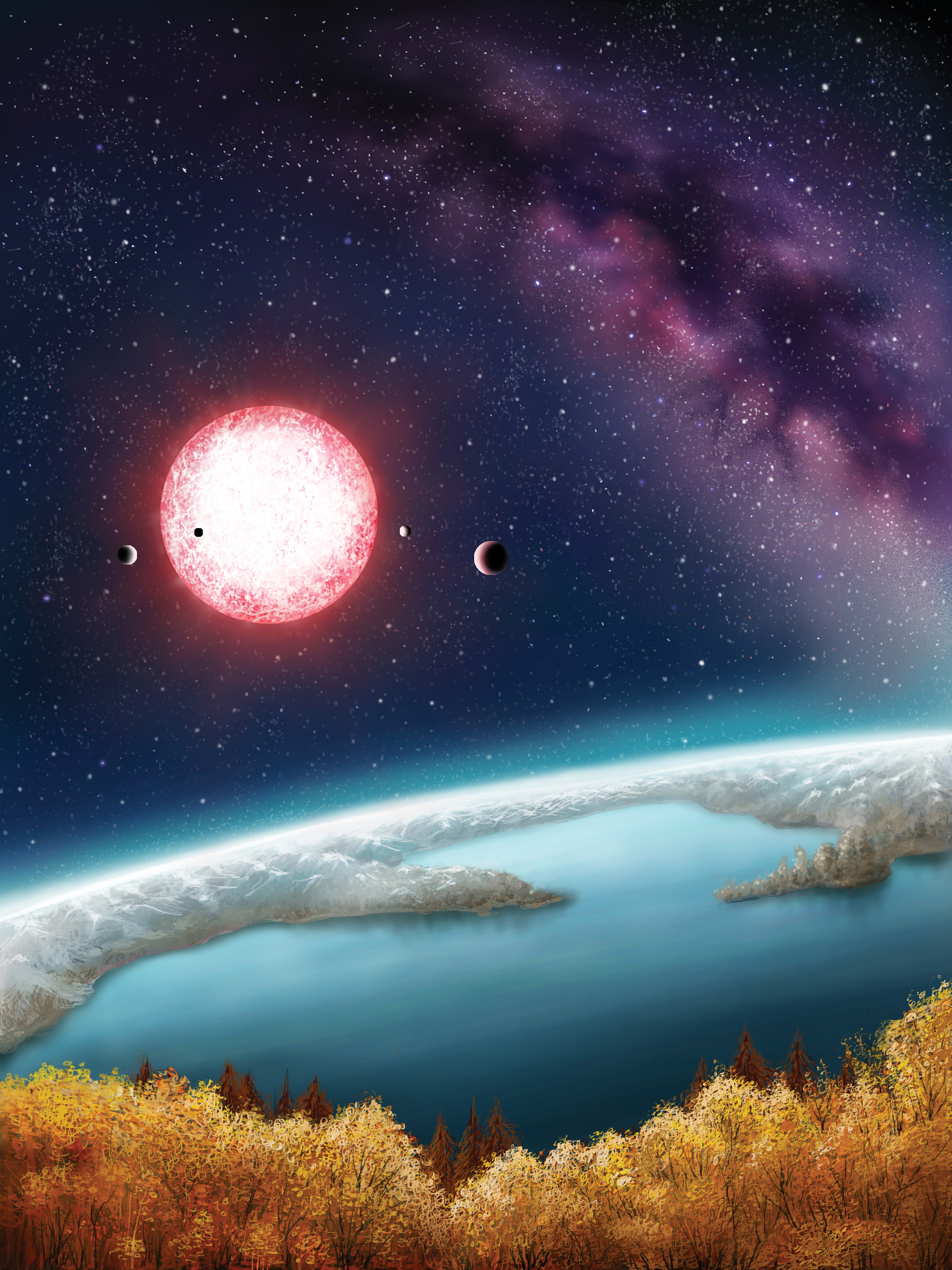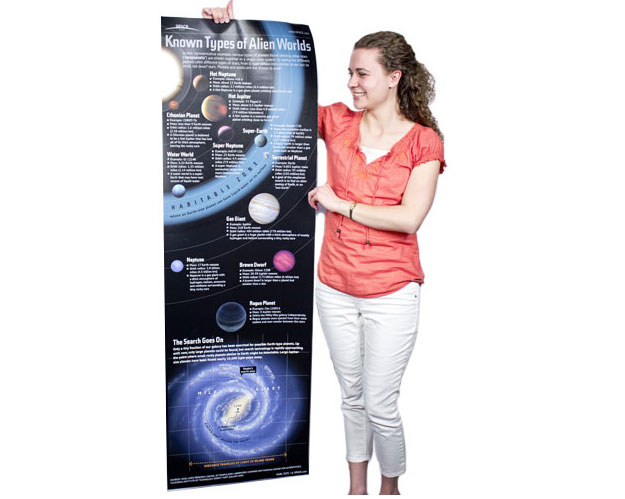5 Things to Know About Alien Planet Kepler-186f, 'Earth's Cousin'

A newly discovered planet nicknamed "Earth's cousin" has just been found 490 light-years from Earth.
The planet, called Kepler-186f, is the first Earth-size planet found in the habitable zone of its star. Only about 10 percent larger than Earth, Kepler-186f is the closest planet to Earth in size ever found in the habitable zone of its star. What else do you need to know about the new alien planet discovery?
Here are five things to keep in mind about Kepler-186f:
Kepler-186f is a history-making find
Kepler-186f is the first Earth-size alien planet found in the habitable zone of its star. That means the planet, which is only slightly larger than Earth, is in the part of its star system where liquid water could exist on the planet's surface. [See artist illustrations of alien planet Kepler-186f]
Astronomers have found other planets in the habitable zones of their stars, but this is the first time a planet this close in size to Earth has ever been found in the habitable zone of its star.
"This is an historic discovery of the first truly Earth-size planet found in the habitable zone around its star," University of California, Berkeley astronomer Geoff Marcy, who is unaffiliated with the new research, said. "This is the best case for a habitable planet yet found. The results are absolutely rock solid. The planet itself may not be [rocky], but I'd bet my house on it. In any case, it's a gem."
Breaking space news, the latest updates on rocket launches, skywatching events and more!
Scientists discovered the planet in data collected by NASA's Kepler space telescope.
Life could thrive ... maybe
Because of Kepler-186's location in the habitable zone around its star, the planet might be a place where life can thrive. It's possible that the planet has an atmosphere that can help keep water in liquid form on the surface, a prerequisite for life as it is known on Earth.
Kepler-186f is on the outer edge of the habitable zone, so it is possible that the planet's water could freeze. Its larger size, however, could mean the planet has a thicker atmosphere, insulating the planet, San Francisco State University astronomer and study co-author Stephen Kane said in a statement.
Although they know the alien world is in its star's habitable zone, scientists still aren't sure what the planet's atmosphere consists of, and they cannot say with certainty that Kepler-186f could support life. The planet is Earth-sized, but it might not be Earth-like.
"Some people call these habitable planets, which of course we have no idea if they are," Kane said in a statement. "We simply know that they are in the habitable zone, and that is the best place to start looking for habitable planets."
It is one of five planets in the Kepler-186 star system
Kepler-186f is one of five planets found in the extrasolar system located about 490 light-years from Earth. The newly discovered exoplanet orbits about 32.5 million miles (52.4 million kilometers) from its sun. It takes Kepler-186f about 130 days to orbit its red dwarf star.
The other four planets orbiting the star, however, are not in that "Goldilocks zone."
"The four companion planets — Kepler-186b, Kepler-186c, Kepler-186d and Kepler-186e — whiz around their sun every four, seven, 13 and 22 days, respectively, making them too hot for life as we know it," NASA officials said in a statement. "These four inner planets all measure less than 1.5 times the size of Earth." [10 Exoplanets That Could Host Alien Life]
Scientists have described Kepler-186f as a cousin to Earth. The Kepler-186 star is dimmer than the sun, so the planet may be somewhat similar to Earth in size, but its star is not the same as the sun.
"This [Kepler-186f] is an Earth-size planet in the habitable zone of a cooler star," Tom Barclay, Kepler scientist and co-author of the new exoplanet research, told Space.com. "So, while it's not an Earth twin, it is perhaps an Earth cousin. It has similar characteristics, but a different parent."
A true Earth twin, which exoplanet hunters have yet to find, would be the same size as Earth, but also orbit a sun-like star.
Its star is cooler than the sun
The Kepler-186 star is about half the mass of the sun, and the newly discovered planet is far enough away from its star that powerful flares may not greatly affect the planet, scientists have said. Stars like Kepler-186 also have long stellar life spans.
If Kepler-186f were circling the sun, it would travel within the orbit of the planet Mercury, a planet that is not considered habitable. Because Kepler-186 is a relatively cool, red dwarf star, the planet still lies within the star's habitable zone. The star's brightness at noon on the surface of the planet is comparable to that of the sun an hour before sunset on Earth, NASA officials said.
"This planet is modestly illuminated by its host star, a red dwarf," Marcy said. "This planet basks in an orange-red glow from that star, much [like what] we enjoy at sunset."
Follow Miriam Kramer @mirikramer and Google+. Follow us @Spacedotcom, Facebook and Google+. Original article on Space.com.

Miriam Kramer joined Space.com as a Staff Writer in December 2012. Since then, she has floated in weightlessness on a zero-gravity flight, felt the pull of 4-Gs in a trainer aircraft and watched rockets soar into space from Florida and Virginia. She also served as Space.com's lead space entertainment reporter, and enjoys all aspects of space news, astronomy and commercial spaceflight. Miriam has also presented space stories during live interviews with Fox News and other TV and radio outlets. She originally hails from Knoxville, Tennessee where she and her family would take trips to dark spots on the outskirts of town to watch meteor showers every year. She loves to travel and one day hopes to see the northern lights in person. Miriam is currently a space reporter with Axios, writing the Axios Space newsletter. You can follow Miriam on Twitter.




